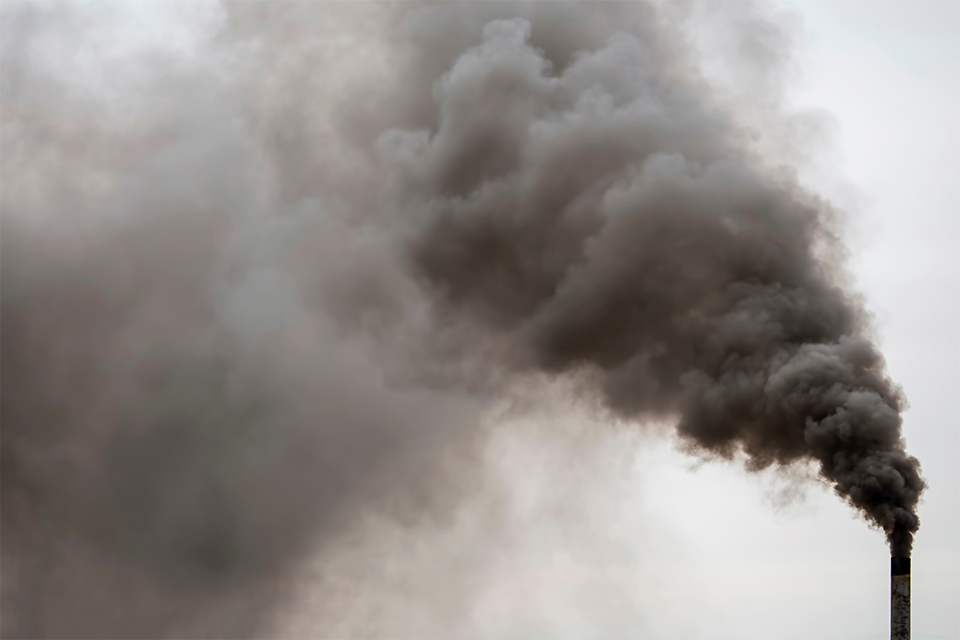2023-03-03
Pollutants in Emissions to Air – What’s in the Smoke?

Speaking of industrial emissions to air, it is often a matter of emissions resulting from combustion processes. The main components of the emissions are nitrogen and some excess oxygen originating from the incoming air being fed to the combustion process, as well as water and carbon dioxide (CO2) being the primary results of the combustion reactions. The concentrations are at percentage levels. CO2 is a major pollutant and culprit when it comes to climate changes. However, visible white smoke is often just condensing water.
Gaseous Pollutants
A small fraction of the emissions also consists of other substances being generated either in secondary reactions in the combustion process, or as a result of the flue gas treatment processes applied. These substances are quite often also pollutants, i.e. bad for the health and/or environment.
Examples of commonly observed pollutants generated in combustion processes are carbon monoxide (CO, appearing in cases of incomplete combustion) sulfur dioxide (SO2, where the sulfur originally was embedded in the fuel), and nitrogen oxides (NO and NO2, formed in side-reactions of the combustion process).
Waste Incineration
If the fuel is household or industrial waste, there can also be notable levels of hydrogen chloride and hydrogen fluoride (HCl, HF, where the Cl and F atoms often comes from plastics in the waste). More complex pollutants such as dioxins can also be formed.
In cases of hazardous waste incineration, there can also be for example mercury, iodine, and bromine being emitted, either in “pure” state (Hg, Br2, I2) or in molecular aggregates such as mercury chloride (HgCl2). Mercury compounds can also be emitted from coal-fired power plants, as mercury can be embedded in the coal itself. Metal smelters can also be major sources of certain air pollutants, notably SO2.
Production Slips
Chemical production facilities such as refineries and fertilizer industries often host combustion processes leading to generation of the already mentioned pollutants. However, there can also be emissions of gaseous pollutants originating from the core production process, then typically as production slips. The types of pollutants can vary widely between different types of industries and between individual industrial facilities of the same or similar type, but may for example include methane (CH4), benzene (C6H6), hydrogen sulfide (H2S), and ammonia (NH3).
Dust
Solid substances in the emissions to air can be referred to as “dust” or “particulates”, often meaning the same thing. “Soot” is a special case of dust, essentially consisting of complex carbon-based substances. Black smoke is effectively soot particles being emitted.
Soot is generated from the carbon in fossil fuel in cases of incomplete combustion. First, there is a so-called nucleation where nanometre-sized spheres of carbon are formed. Then comes surface growth and coagulation, where somewhat larger particles are formed. This is followed by further aggregation (agglomeration, condensation, oxidisation), eventually leading to the fine black particles we know as soot.
Particulates not being soot are often also oxides, although based on aggregation of e.g. MgO, SiO2, and Al2O3. Some of these substances occur naturally, some can be generated in industrial processes. A notable industrial area where particulates are generated is the cement industry, where calcium-based dust (limestone, calcium oxides) but also aluminium and ferric oxides occur in the production process.
Effects of Pollutants
So, pollutants can be generated, and they are apparently undesired. But what’s the problem? In short, it is the adverse effects the pollutants have on health – humans as well as animals, growth of vegetation including crops and forests, and the climate in general. Air pollution can also affect the cultural heritage by material deterioration.
There are many detailed publications on the effects of air pollutants which can be studied, for example from the World Health Organization, from the U.S. Environmental Protection Agency, and from the European Environment Agency.
Although improved air quality is reported from some parts of the world, it is far from everywhere that it is easier to breath now than it was a century ago. The work on creating awareness of pollution and its impact on health and environment, also including financial implications, is therefore more essential than ever before.
